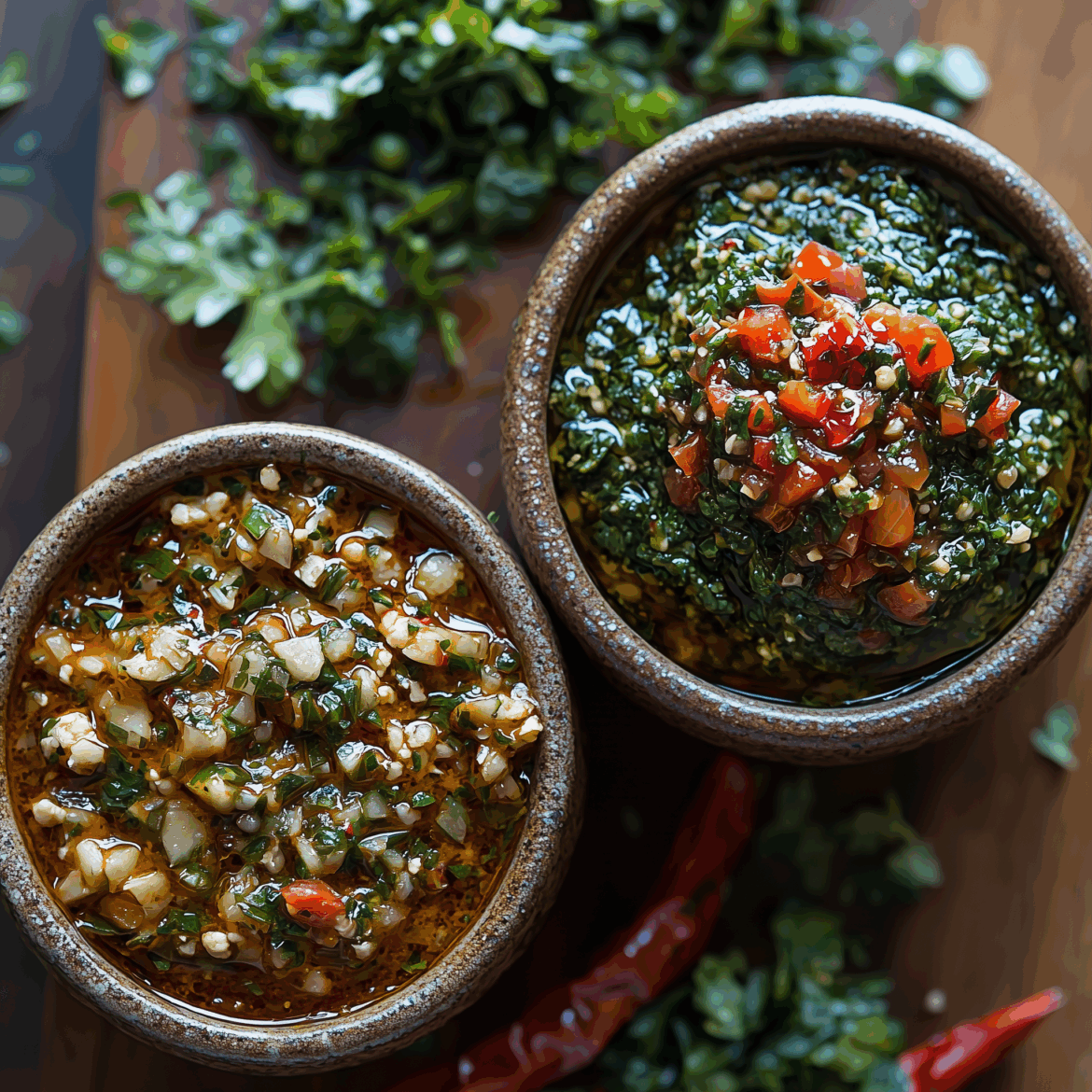North African cuisine is famous for its bold and aromatic flavours, with spice blends and marinades playing a central role in its dishes. Two of the most well-known condiments are chermoula and harissa. Both add depth and complexity to dishes, but they serve different purposes and bring distinct flavour profiles to the table. If you’ve ever wondered how these two powerhouse ingredients compare, this guide will break down their differences in terms of ingredients, uses, heat level, and regional variations.
What Is Chermoula?
Chermoula is a herb-based marinade and sauce widely used in Moroccan, Algerian, and Tunisian cooking. It is traditionally used to flavour seafood, meats, and vegetables before grilling or roasting.
Key Ingredients:
- Fresh coriander and parsley
- Garlic
- Olive oil
- Lemon juice or preserved lemon
- Ground cumin and coriander
- Paprika
- Chilli flakes (optional)
Flavour Profile:
Chermoula has a fresh, citrusy, and herbaceous taste with warm, earthy undertones from the spices. The presence of preserved lemon adds a slightly tangy depth, while garlic and olive oil create a smooth, rich texture. Some versions incorporate mild chilli for a gentle heat, but chermoula is not typically considered a spicy condiment.
Common Uses:
- Marinade for fish, chicken, and lamb
- Dressing for roasted vegetables
- Stirred into couscous or grains
- Drizzled over grilled dishes
For a homemade chermoula recipe, check out our detailed guide: Chermoula Recipe – The Moroccan Flavour Burst
Explore more delicious chermoula-based dishes, Chermoula Lamb Chops, Chermoula Roasted Vegetables, Chermoula Spiced Chicken or Chermoula Grilled Sea Bass. All of these dishes are fairly easy to make, you can use shop-bought, but you can also use our Chermoula guide and make it yourself, which is also really easy.
What Is Harissa?
Harissa, in contrast, is a chilli-based paste that originates from Tunisia but is popular throughout North Africa and the Middle East. It is known for its fiery kick and deep, smoky flavour.
Key Ingredients:
- Dried red chillies
- Garlic
- Olive oil
- Cumin and coriander seeds
- Caraway seeds
- Tomato paste (optional)
- Vinegar or lemon juice
Flavour Profile:
Harissa is spicy, smoky, and slightly tangy, with a rich umami depth from the chillies and tomato paste. The spices provide warmth, while olive oil gives it a smooth, spreadable consistency. The heat level varies depending on the type of chillies used, but it can range from mild to intensely hot.
Common Uses:
- Added to stews and tagines for extra heat
- Mixed into dips like hummus or yoghurt
- Used as a spread in sandwiches and wraps
- Stirred into couscous, soups, or rice
Key Differences Between Chermoula and Harissa
| Feature | Chermoula | Harissa |
|---|---|---|
| Base Ingredient | Herbs (coriander & parsley) | Chillies |
| Texture | Smooth and slightly chunky | Thick and paste-like |
| Flavour | Fresh, tangy, herbaceous | Spicy, smoky, bold |
| Heat Level | Mild to medium (optional) | Medium to very spicy |
| Primary Use | Marinade & dressing | Condiment & spice paste |
When to Use Chermoula vs. Harissa
If you’re cooking a light, citrusy dish with seafood or vegetables, chermoula is your go-to. It enhances natural flavours without overpowering them. On the other hand, if you want to add a fiery kick to soups, tagines, or grilled meats, harissa is the better choice.
Both condiments can also be used together! A spoonful of harissa in a chermoula-based marinade can introduce a subtle heat, creating a fusion of flavours.
Try them both
While both chermoula and harissa are staples in North African cuisine, they serve different purposes in the kitchen. Chermoula is a vibrant, herbaceous marinade, perfect for lighter, citrus-forward dishes. Harissa, on the other hand, is a bold, spicy paste that brings heat and depth to a variety of dishes.
Understanding their differences allows you to choose the right one for your cooking needs, or even experiment with combining them for a unique flavour twist.
Which one will you try first? If you’re new to chermoula, start with our easy Chermoula Recipe and bring the authentic taste of Morocco to your kitchen!

Never Miss a Bite!
Get delicious new recipes weekly, cooking tips, exclusive discounts, and food inspiration delivered straight to your inbox. Sign up to our free newsletter today!
